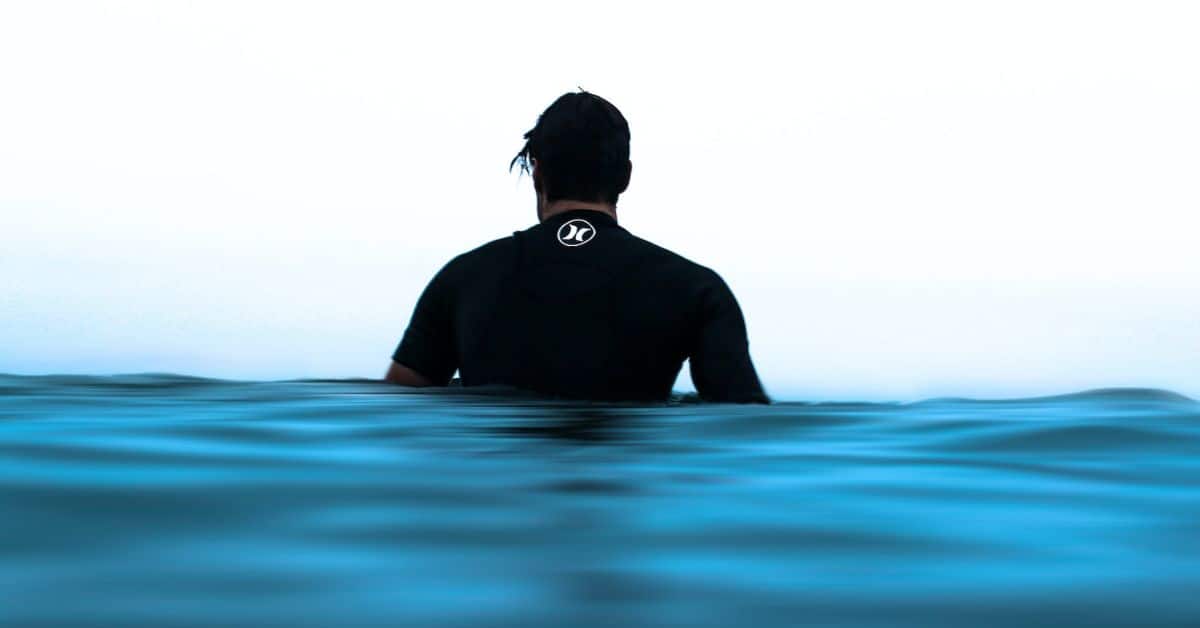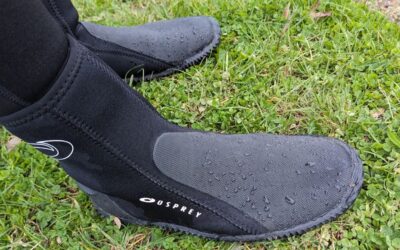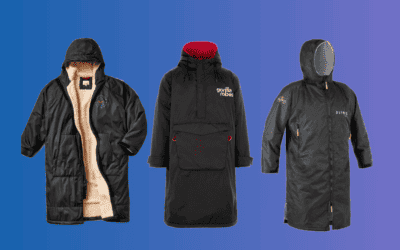When it comes to engaging in water activities such as surfing, paddle boarding, diving, or snorkelling, wearing a wetsuit is essential to keep you comfortable and protected in the water.
But… What do you wear under a wetsuit?
Knowing what’s best to wear underneath your wetsuit is equally important as the wetsuit itself.
The right choice of undergarments can greatly enhance your experience, providing insulation, comfort, and flexibility.
In this article, we’ll explore the various options and considerations for what to wear under a wetsuit, ensuring you make the best choices for your needs.
Why Wear Undergarments?
Undergarments serve multiple purposes when worn under a wetsuit. Firstly, they help enhance the insulation provided by the wetsuit, keeping your body warm even in colder water temperatures.
Additionally, undergarments act as a barrier between your skin and the wetsuit, preventing chafing and discomfort during prolonged use. Finally, wearing appropriate undergarments can improve flexibility and ease of movement while in the water.

Disclaimer: If you make a purchase via the links on our site, I may earn an affiliate commission at no additional cost to you. You can read my affiliate disclosure in the privacy policy. Thanks for your support!
What Do You Wear Under A Wetsuit?
There are several types of undergarments that can be worn under a wetsuit, depending on personal preferences and the specific water activity. Here are some common options:
- Rash guards and swim shirts: These lightweight, quick-drying garments are ideal for providing an additional layer of protection against sunburn, jellyfish stings, and minor abrasions. They are commonly used in warmer waters or during activities where minimal insulation is required.
- Wetsuit tops and bottoms: Designed specifically for use with wetsuits, these garments are typically made from stretchy neoprene material. They provide added insulation, enhance flexibility, and minimize chafing. Wetsuit tops are available in various sleeve lengths, from sleeveless to long-sleeved, allowing for customization based on personal preference and water temperature.
- Dive skins and base layers: Dive skins, also known as “Lycra suits” or “skinsuits,” are thin, form-fitting garments that provide a streamlined fit under a wetsuit. They offer minimal insulation but help improve comfort and reduce friction. Base layers made of synthetic fabrics like polypropylene or merino wool are also popular choices for their moisture-wicking and insulating properties.
- Thermal layers and wetsuit hoods: In colder water conditions, thermal layers such as fleece-lined tops and bottoms can provide additional warmth and insulation. Wetsuit hoods are designed to cover the head, neck, and sometimes the chin, offering protection against heat loss in extremely cold waters.
Choosing the Right Undergarments
When selecting undergarments for your wetsuit, consider the following factors:
- Material and construction: Opt for undergarments made from high-quality materials that offer good insulation and moisture-wicking properties. Flatlock or glued and blind-stitched seams can minimize water entry and enhance durability.
- Fit and sizing considerations: Undergarments should fit snugly but not restrict movement or cause discomfort. Ensure proper sizing to maximize insulation and prevent excess water flushing.
- Climate and water temperature: The choice of undergarments should align with the conditions you’ll be in. Thicker thermal layers are necessary for colder waters, while lighter options suffice in warmer climates.
- Personal preferences and budget: Consider your personal comfort preferences, such as sleeve length, thickness, and brand options. Additionally, take your budget into account, as some undergarments may be more expensive than others.

Maintaining Undergarments
To prolong the lifespan of your undergarments and ensure optimal performance, follow these maintenance tips:
- Washing and drying recommendations: Check the manufacturer’s instructions for proper washing techniques. Generally, hand washing with a mild detergent and rinsing thoroughly is recommended. Avoid using bleach or harsh chemicals. After washing, hang the garments to air dry away from direct sunlight.
- Storage tips to prolong lifespan: Store undergarments in a cool, dry place away from direct sunlight and extreme temperatures. Avoid folding or compressing them for extended periods, as it may cause creases or damage to the material.
- Inspecting for wear and tear: Regularly check your undergarments for signs of wear, such as fraying seams or tears. Replace any damaged or worn-out garments to ensure optimal performance and protection.

Understanding Wetsuit Materials
Wetsuits are an essential piece of gear for water enthusiasts, providing insulation and protection in various aquatic activities. Understanding the materials used in wetsuit construction is key to choosing the right suit for your needs.
The primary material used in wetsuits is neoprene, a synthetic rubber renowned for its exceptional insulating properties. Neoprene is composed of tiny nitrogen gas bubbles enclosed within a polymer matrix, creating an effective barrier against the cold water. The thickness of neoprene can range from 1mm to 7mm, with thicker suits providing greater insulation.
Flexibility is another crucial factor in wetsuit material. The neoprene used in wetsuits is often constructed with stretch fibers, allowing for a greater range of motion. High-quality neoprene has excellent “memory,” meaning it returns to its original shape after being stretched, ensuring a snug fit.
Wetsuits are classified based on the water temperature they are designed to withstand. Here are the main categories:
- Full suits: Full suits, also known as steamers or full-length wetsuits, provide maximum coverage and insulation. These suits typically have long sleeves and full-length legs, making them suitable for colder water conditions. They offer superior warmth and protection against the elements.
- Spring suits: Spring suits, sometimes called shorties, are designed for milder water temperatures or warmer climates. They feature short sleeves and either short legs or no legs at all, providing increased flexibility and breathability.
- Wetsuit tops and bottoms: These versatile pieces can be combined to create custom configurations based on individual preferences and water conditions. Wetsuit tops are available in various sleeve lengths, including sleeveless, short-sleeved, and long-sleeved options. Wetsuit bottoms, also called wetsuit shorts or trunks, offer lower body coverage without restricting movement.
- Wetsuit vests and jackets: Wetsuit vests and jackets are ideal for layering and providing extra core insulation. They are commonly used in combination with other wetsuit pieces to adapt to changing weather conditions or varying water temperatures.
When selecting a wetsuit, it’s essential to consider the water temperature and intended activity. A thicker wetsuit is suitable for colder waters, while a thinner one offers better comfort and flexibility in warmer conditions. Additionally, different water sports may require specific wetsuit designs or features. For example, surfing wetsuits often have reinforced knee pads for durability, while diving wetsuits may have additional insulation around the chest and back.
By understanding the materials and categories of wetsuits, you can make an informed decision when choosing the right wetsuit for your water adventures. Remember to prioritize a proper fit, as it ensures optimal insulation and comfort.

Final Thoughs
Choosing the right undergarments to wear under a wetsuit is crucial for enhancing your comfort, insulation, and flexibility while engaging in water activities. Consider the water temperature, personal preferences, and the specific activity you’ll be undertaking.
Whether it’s rash guards, wetsuit tops and bottoms, thermal layers, or other options, finding the right combination will ensure an enjoyable and comfortable experience in the water.
What Do You Wear Under a Wetsuit FAQ
Can I wear cotton under a wetsuit?
It’s best to avoid wearing cotton under a wetsuit as it retains moisture, which can make you feel colder in the water.
How tight should undergarments be under a wetsuit?
Undergarments should fit snugly but not restrict movement or cause discomfort. A proper fit ensures maximum insulation and flexibility.
Can I wear multiple layers under a wetsuit?
Yes, you can layer multiple undergarments under a wetsuit for added insulation. Ensure the layers are not too thick, which can restrict movement.
Should I wear socks under a wetsuit?
Wearing socks under a wetsuit is a personal preference. It can provide added warmth and protection against rubbing or chafing.
Do I need undergarments if my wetsuit is already thermal-lined?
While thermal-lined wetsuits offer some insulation, wearing undergarments can provide additional warmth and comfort, especially in colder waters.
Can I wear a regular bathing suit under a wetsuit?
It’s not recommended to wear a regular bathing suit under a wetsuit as it may cause discomfort and hinder proper insulation.
Are there specific undergarments for different water sports?
Some undergarments are designed specifically for certain water sports like surfing or diving, offering specialized features for those activities.
Can I wear a wetsuit without any undergarments?
While it’s possible to wear a wetsuit without undergarments, it may lead to reduced insulation, discomfort, and chafing.

About the Author
Steve Cleverdon is an adventure blogger dedicated to helping outdoor enthusiasts make the most of their outdoor experiences. With years of travel and many epic adventures including a 3000-kilometre solo hike across New Zealand, Steve has amassed practical knowledge on outdoor gear. You can learn more about his adventures here. Through expert reviews, recommendations, and guides, he equips his readers with the best gear for their next adventure. If you want to send Steve a quick message, visit his contact page here.




